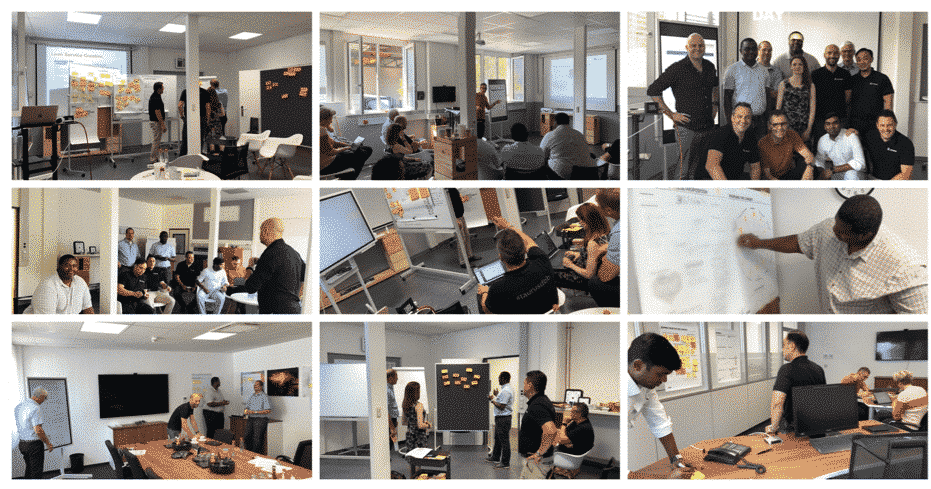Marketing Management & Customer Centricity
Unlike in the past, where the product and brand are at the centre of the company, Rethinking Marketing [1] is all about customer-centricity. It explains why the right culture, incentives and customer-centric strategy must be created and driven from the top to be successfully implemented.
Today, companies have the opportunity to interact with their customers and target groups directly. The focus must lie on building long-term relationships by focusing on serving customer segments instead of pushing products to its customers. This is a radical shift from product-centricity to customer-centricity.
In order to capture this opportunity, the marketing department must be reinvented to become the customer department, and the CMO (Chief Marketing Officer) becomes the CCO (Chief Customer Officer) with the objective to oversee important customer-focused functions within the company. The CCO oversees customer service and relationship management to cultivate long term customer relationships; R&D and market research also fall under him as it is equally important to focus on customer needs and not overengineering products without the customer in mind.
Metrics must change from product profitability to customer profitability (CP) or measuring customer lifetime value (CLV) instead of current sales or customer equity instead of brand equity. Also market share will be replaced by customer equity share.
If customer-centricity is implemented correctly, the classical silo approach – where product manager and sales is focused on pushing their own product group relevant products to customers only – will change to serve the customer entirely based on customer needs focused on metrics like CP and CLV. With this new mentality, customer data collected can be shared within the whole organization without mistrust and without having the typical competitive mindset between product silos. Now the less profitable brand can be replaced by a more profitable brand as the product managers incentives to push their own silo/brand has changed to CP and CLV.
Why Design Thinking must be embraced?
With a focus on the evolution of design thinking, Design Thinking Comes of Age [2] explains the shift of design closer to the centre of the organization and the way people work. This approach is a response to the increasing complexity of new business models and new technologies in sometimes volatile business environments. For example physical products need to be integrated with software applications which must be simple, intuitive and user friendly to generate a great and positive experience. It must be a core competence of the company to become an essential tool to simplify and humanize products and services.
There needs to be a culture change to embrace the design-thinking culture in organizations to help people deal with high levels of complexity. It is all about empathy with users, prototyping and embracing failure as an opportunity to create something great and foster innovation. An interactive, responsive and flexible organization is needed for that. Design in a design-centric culture must be understood as a role, providing a set of principles to all employees involved bringing ideas to life. Nonlinear problems can only be tackled by applying nonlinear thinking.
The focus lies on the emotional user experience. Employees needs to be empowered to observe the behaviour and draw conclusions what people need and want. Successful organizations use emotional language to describe products and its users, then teams discuss and develop an emotional value proposition that is a promise of a feeling.
The strategic conversations are around how business decisions positively influence user experiences and typically don’t emphasize on its financial success (in other words, not numbers driven). The key is that the focus on exceptional experiences is not limited to a small group of people in the organization, it must influence every customer-facing function.

Snaps from our Design Thinking Session held at the AS-Schneider HQ in 2019.
Failure culture: Prototyping is one of the important activities and toleration to failures are an essence to success. In the traditional world, the design criteria’s are developed precisely at the beginning of the product development process and followed strictly. In a design-thinking world less is given and most of the criteria are developed in the process of doing it (on the fly), following a build-measure-learn pivot loop.
Focus on simplicity, a clean simple experience. Products built on emotional value propositions are very often simple and it is clear what the product must be able to do, and also not do.
Today we have the best opportunities to gather consumer data and insight into behaviours. Going directly to consumers is a big disruptor – in that way companies can get direct feedback of likes and dislikes and can use this during the design-thinking process.
By putting the design-thinking into the centre of the organization one also automatically puts the customer into the centre. This goes hand in hand with Rethinking Marketing.
Bibliography & Credits
[1] Rust, R. T., Moorman, C., and G. Bhalla (2010), “Rethinking Marketing,” Harvard Business Review, 88 (1/2), 94-101. (reprinted in Harvard Business Review (2013): On Strategic Marketing. HBR’s 10 Must reads. Harvard Business Publishing)
[2] Kolko, J. (2015), “Design Thinking Comes of Age,” Harvard Business Review, 93 (9), 66-71.
Image sources: Vadym Pasichnyk/Shutterstock.com modified by Tim-Frederik Kohler; Snaps by Tim-Frederik Kohler.

